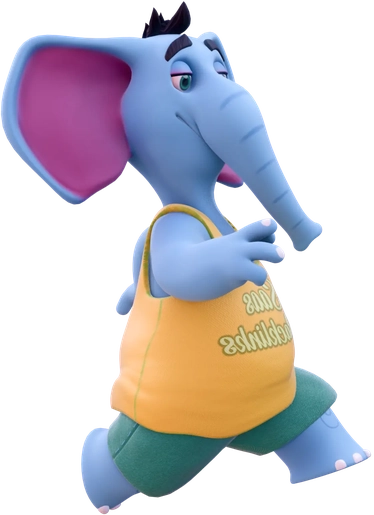No matter how hard you’ve worked to create content, it doesn’t mean much if no one reads it, right? And the first gateway to your article? Yep, it’s your blog title.
It’s the first thing people see. The best blog titles set the tone, spark curiosity, and give readers a reason to stick around.
In this blog, we’ll walk you through 8 simple tips (plus examples) to help you write blog titles that are relevant, engaging, and actually match your writing.
8 Tips to Write Blog Titles That Keep People Reading
Here’s how to write a blog title that both engages readers and is search-engine friendly.
Use the Right Search Intent
When writing a blog title for your next article, pay attention to the search intent.
Are you informing or trying to sell your product or service? Depending on the reason behind the blog, it will help you write a headline that answers users’ questions and meets their needs. Considering different blog types can also guide how you shape the title to align with the reader’s expectations and intent.
If your heading is something like this, “3 Steps to Become a Content Writer,” but your article mainly discusses freelance platforms for finding writing gigs, then the intent does not align with the content.
Here’s why it’s a problem:
- Your title is misleading
- It does not match the user’s intent and needs
That’s why we highly recommend defining search intent before writing your title. This way, you can write a blog headline that clearly matches what users are searching for and what your content delivers.
Add the Primary Keyword
Even though the main goal of a blog post title is to grab your readers’ attention, following SEO best practices for blog titles is a smart way to give your content a little performance boost.
Google blog titles are human-friendly as well as engine-friendly. Don’t you ask how? The titles that appeal to engines include your primary keyword. So, when generating blog post ideas for your next article, don’t forget to optimize them later.
The strategy is to use the main keyword at the beginning of the blog titles. Like in the overall content, in the title as well, keyword stuffing is a big no-no. As readers scan the titles first, engines, too, get to the titles prior to the content.
Further reading:
How to Find Primary Keywords
11 Main Types of Keywords in SEO
Include Numbers
As it’s known from the famous novel, “Grown-ups like numbers.” Indeed, people are fond of numbers, statistics, and exactness. Being exposed to numerals, people pay more attention. As a consequence, such blog titles grab attention.
Numbers set specificity and clarity in the content; they quantify the benefits of your content, which can make it more appealing to potential readers. And it’s important that you write your numbers in numerals rather than in letters. It will strike the reader’s eye.
Numbers are your winning coins in blog titles, for people expect to read a list of suggestions to solve their problems. Let’s have a look at some blog post title examples from Saynine’s blog:
“7 Link Building Outreach Templates: Reach Out, Get Links, Repeat!“
“Link Building Mistakes to Avoid in 2025 [Insider Tips]“
“How to Check Google Rankings: 3 Handy Tools“
What’s appealing is that readers will know that they will get exactly 7 templates, 3 tools, and fresh information for 2025, so they are mentally ready to take in the information.
Keep it Short and Clear
As mentioned, titles set the content expectation for the reader. This means titles mustn’t be out of nowhere, irrelevant, or create unnecessary shock (you face the clickbait here and there when browsing).
As content writers, we must stay away from misleading our readers. And, most importantly, search engines. Your message must be clear in the title. It must convey what the reader will get from reading the article. What’s the value?
For instance, I titled the following article “How to Write a Good Blog Title: 8 Tips + Examples“. When you read it, you expect to find 8 tips that will eventually help you compose proper titles. Also, as my title hints, you will read some blog post title examples throughout the article.
Making my titles correspond to the content will establish trust and credibility with my readers. It also establishes the brand identity and whether your company can be trusted as a credible source.
At the same time, make sure your titles are concise. Lengthy headlines can overwhelm readers and often get cut off in search results, especially on mobile devices. So, we advise you to keep your titles under 60 characters to ensure they display properly.
Include Power Words
Words are, indeed, game changers when it comes to generating blog title ideas. They have a huge impact on human psychology. We know that marketing has fair portions of psychological elements. Turns out, by mixing them well, you will get your personal secret formula for winning content.
As important as communication is, so are the words used in communicating the message. The choice impacts the effectiveness of transmitting ideas. Since we cannot use non-verbal means of communication in writing, we rely solely on the power of the lexicon.
Power words cause emotional responses, pushing the reader to action – clicking, reading, downloading, buying, or committing any campaign-intended action. Power words can benefit your digital marketing in many ways, including:
- Boosting readers’ curiosity
- Triggering emotional reactions
Tha’s why we often include certain power words in the blog titles, depending on what we want to express and convey.
Some catchy blog title ideas spiced with power words:
“Keyword Clustering: How We Organize Keywords in 4 Easy Steps”
“5 Key Types of Anchor Text: Overview + Examples
The reader is caught with the promises you hold: “easy steps” or “best practices”. They know your suggestions are tested, so they develop trust (even before reading).
Suggest a Solution
People reach out to our blogs since they want to know the hows, are curious about the whats, and are excited to reveal the whys. It speaks of the nature and purpose of writing blog content. Our content writing efforts are meant to solve problems and suggest informative content to satisfy the most curious readers.
Well, that’s the content; what must a blog title do? In this respect, as for the impression and clarity, your titles set up the first scene. Reading it, people should know that they will get an idea for the X problem solution and will be more inclined to click through.
Some problem-solving blog post title examples are:
“How to Build Backlinks on a Tight Link Building Budget (Tips + Tools)”
“7 Link Building Challenges: Here’s How We Overcome Them”
“How to Rank Higher on Google: 10 Expert Tips from Our Team”
What keeps readers interested is knowing they’ll find practical solutions to their problems. If they believe your content will help them solve a problem, whether it’s building backlinks with a small budget, overcoming challenges, or improving Google rankings, they’re more likely to keep reading.
Ask a Question
Oftentimes, people experience a problem without knowing they do. Until they are asked. When you ask your readers something, they start questioning themselves, “Do I really need this?”, “Am I struggling with this?”, “How will X change my life?”.
Interrogating is an effective way to reveal an existing problem and seek solutions.
The purpose of the question articles is to provide the reader with educational content about a topic of their interest. Besides generating interest among readers, question-based blog titles appear more valuable to the reader’s eye.
Imagine you see a question. Won’t you assume there is a solution hidden in the content? Questions imply answers and answers to your problems.
So, when you pique the readers’ curiosity, they appear more willing to read through your content. The intrigue and the pause from the questions make up for the conversion of the readers.
Here are some examples of question-based blog titles:
“How Long Do Backlinks Take to Work? Answer Revealed”
“Can You Rank Without Backlinks? Here’s Why We Say No”
“What is a Link Building Agency And How to Start One?”
If you look at most search queries on Google, they are questions. And if you want to excel in your content, we advise you to address the audience’s questions in your articles.
Mention a Freebie (e.g., templates, worksheets, etc)
Who doesn’t like the free cookie with the ordered cappuccino?
Giving away something that’s not asked for is a nice-to-do marketing trick that engages with the reader. Giveaways also make a connection with the readers and establish trust.
For instance, when I write (+Worksheet), (+Bonus Tips), (+5 Templates), etc., my readers expect the free stuff in the blog article, and it excites them. Offering bonuses increases the reader engagement and motivation to stay longer on your page.
Some examples of blog titles offering freebies are:
“Keyword Cannibalization: How to Spot & Fix It (Free Template Included)”
“Backlink Management with Google Sheets: Our Approach (+ Free Template)”
“Link Building Report: How We Analyze & Share Your SEO Results (+ Free Template)”
“Sharing is caring” always works best. Share your expertise with your audience, show care and attention, and your efforts will pay off eventually.

Wrapping Up
A strong blog title doesn’t just make your article look better, but also makes people want to read it. And that’s what great content is about.
If writing isn’t your thing or you’re just too busy, we can help. Our full SEO services come with expert content writing. Check it out!
FAQ about blog titles
What are good blog titles?
Good blog titles are clear, specific, and aligned with the content’s purpose. They reflect the search intent, include focus keywords, and often use numbers or power words to grab attention.
What is the difference between SEO title and blog title?
The SEO title is optimized for search engines and appears in results, while the blog title is what readers see on the post page.
How long should a blog title be?
Ideally, keep your blog title under 60 characters so it displays properly in search results and is easy to read on any device.

Quiz Time
Let's put your knowledge to the test.
Leave your email below to get a SayNine certificate!
Are you sure?






